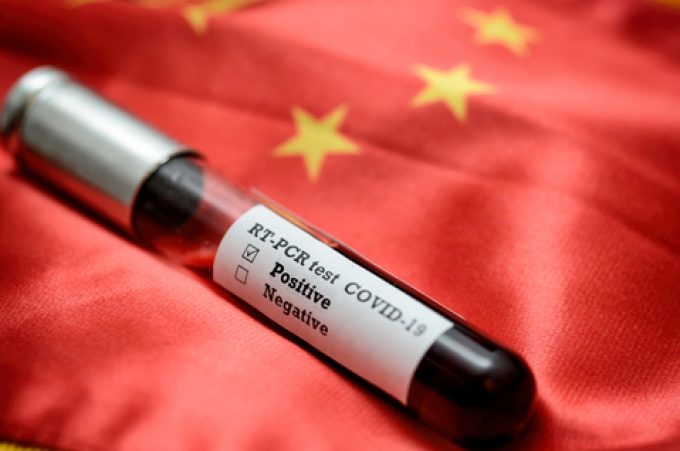US hit by fall in meat exports as China scales back and Brazil steps up
US meat exports are in low gear, affected by bans in the largest market, slowing ...
TFII: SOLID AS USUALMAERSK: WEAKENINGF: FALLING OFF A CLIFFAAPL: 'BOTTLENECK IN MAINLAND CHINA'AAPL: CHINA TRENDSDHL: GROWTH CAPEXR: ANOTHER SOLID DELIVERYMFT: HERE COMES THE FALLDSV: LOOK AT SCHENKER PERFORMANCEUPS: A WAVE OF DOWNGRADES DSV: BARGAIN BINKNX: EARNINGS OUTODFL: RISING AND FALLING AND THEN RISING
TFII: SOLID AS USUALMAERSK: WEAKENINGF: FALLING OFF A CLIFFAAPL: 'BOTTLENECK IN MAINLAND CHINA'AAPL: CHINA TRENDSDHL: GROWTH CAPEXR: ANOTHER SOLID DELIVERYMFT: HERE COMES THE FALLDSV: LOOK AT SCHENKER PERFORMANCEUPS: A WAVE OF DOWNGRADES DSV: BARGAIN BINKNX: EARNINGS OUTODFL: RISING AND FALLING AND THEN RISING

Now China’s Covid restrictions have been relaxed, worker shortages and factory closures, due to outbreaks of the virus, are the latest disruptions to hit the country’s supply chains.
The sudden about-face on zero-Covid has led to soaring cases nationwide, with hospitals “struggling to cope”, according to the SCMP.
Alice Tang, China-Europe land transport planner at ITS Cargo, said the virus had “spread really fast” over the past couple of weeks.
She told The Loadstar: “One forwarder in China said more than 50% of their colleagues are off sick, our our partner in Xinjiang said 70% of their workers were infected and today I called some factories and they said the same.
“As a result, many factories and logistics companies have decided to start the new year holiday early.
“For example, some textile factories in Zhejiang announced a holiday for up to two months. By the end of December, 60% of enterprises in Guangdong, Zhejiang and Shandong will stop working.”
Furthermore, China’s domestic courier services were delayed, she explained: “Parcels are said to be piling up on the streets of Beijing. Many supermarkets are filled with plastic bags of everyday goods waiting for couriers to deliver them.”
According to Zencargo, some factories may also be forced to slow production, due to a lack of components from suppliers.
The forwarder added: “And truck drivers falling ill due to the coronavirus may also bring major disruption to supply chains.”
The only silver-lining is that, with destination markets winding down for Christmas, China’s orders are seasonally significantly down. Exports to the the US, for example, dropped 25% year on year in November, in US dollar terms, while forwarders said December had been “very quiet”.
This has also been reflected by plummeting ocean freight rates, although, according to the latest update from Linerlytica, carriers have managed to slow declining rates, for now.
Linerlytica said: “Capacity management measures to deal with the collapse in container freight rates are helping to slow the rate declines, with the SCFI recording its lowest weekly declines since July.
“However, more needs to be done to reverse the decline, as ad-hoc blanked sailings have been ineffective in reversing the rate slide, while capacity withdrawals are limited to smaller services that have not made any material impact on the overall supply-demand imbalance.
“Carrier refusal to commit to more permanent capacity cuts will continue to hurt rate prospects in 2023, with early contracts signed so far 70% fewer compared with last year.”
Comment on this article
Luke YE
January 05, 2023 at 3:11 amBeing someone in China working on the frontline of international trade and transportation, I see something different.
First of all the figures spoken in the article dated Dec.22nd: “60% of enterprises stop working in Guangdong/Zhejiang/Shandong”- let’s not further spread such comments which are misleading.
From what I see in South China market, for most of export bookings, materialization ratio in last 3 weeks is normal, actually much better than Oct/Nov when cancellation % was higher. If 60% of enterprises are down we should see over 50% of bookings cancelled and all carriers cancelling massively sailings from China – which is not the case.
Instead, as what we knew from clients – most of orders on hands in Dec/Jan, despite some delays might happen, were mostly accommodated.
We need to be aware the market demand itself remains soft due to high inflation and inventory plus supply of dollar worldwide is tight at a interests rate of today’s level plus an on-going geopolitical conflict with no clue of schedule in ending. Hence, there are much less purchasing orders due to soft demand.
On the other hand, boosted by the “Covid-economy” during last 24 months, our manufacturing capacity here in China is much more over the soft demand therefore with minor temporary mitigation of labor for 7-10 days in a rhythmic sequence in different regions/cities, plus strong efforts of our factories to hire temp workers + open OT shifts and in some mega factories robotic automation has been planted, I think we have managed to keep our spirits in delivery of commitment. The tough business environment is caused by something deeper + not easily visible.
Now with peaks of infection gone in most of coastal areas, with herd immunity reached at certain level, with China reopening its border from Jan.8th, let’s look ahead, embrace each other and fight for globalization / international trade expansion. This is the way to make our planet a peaceful better place.